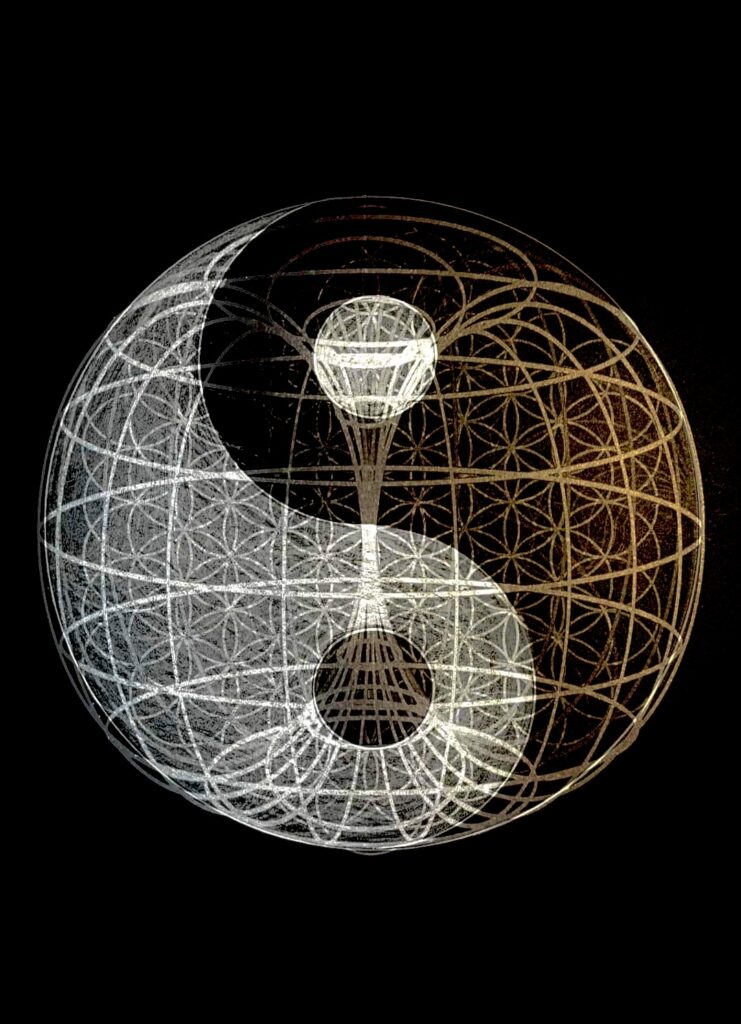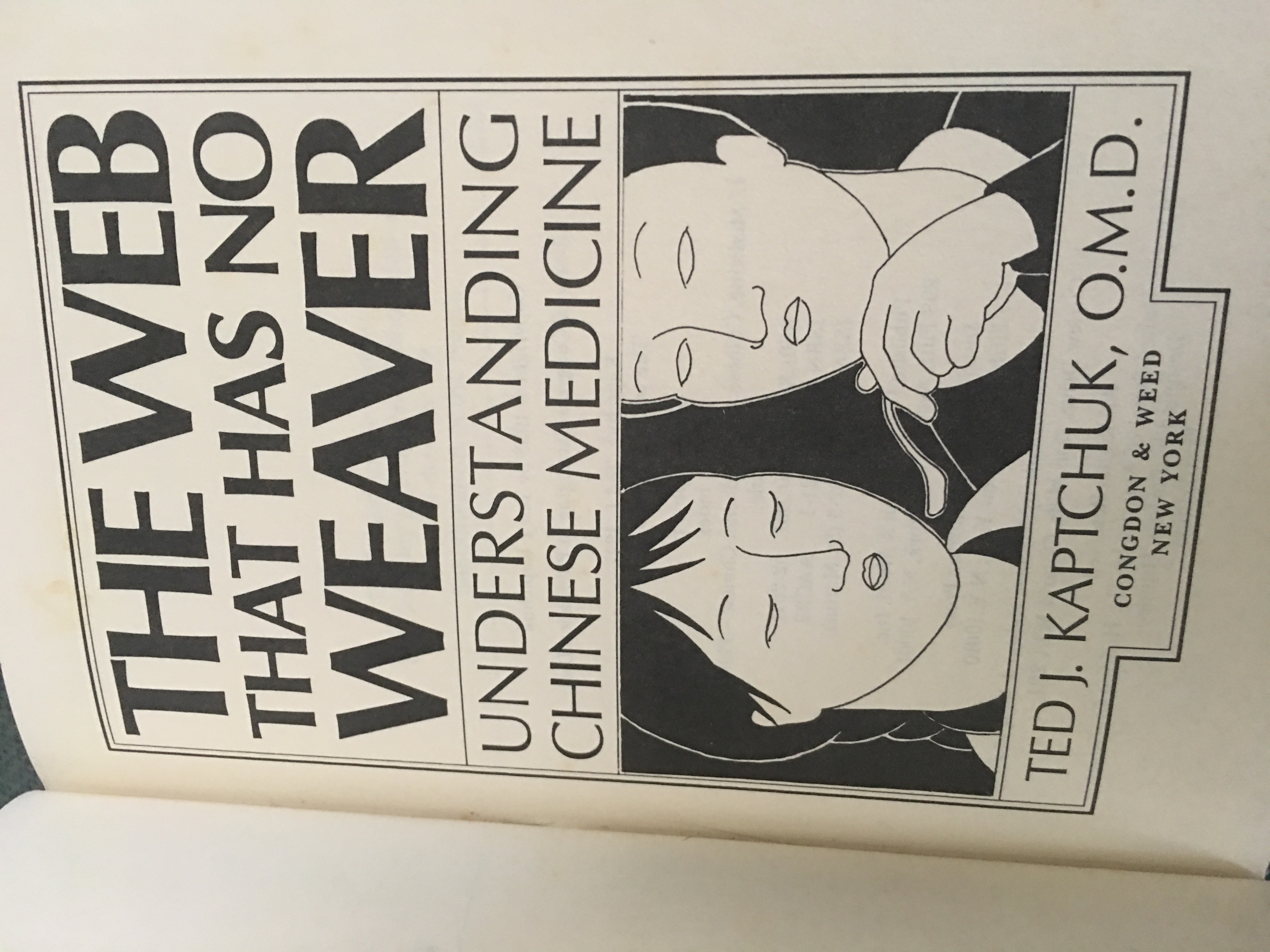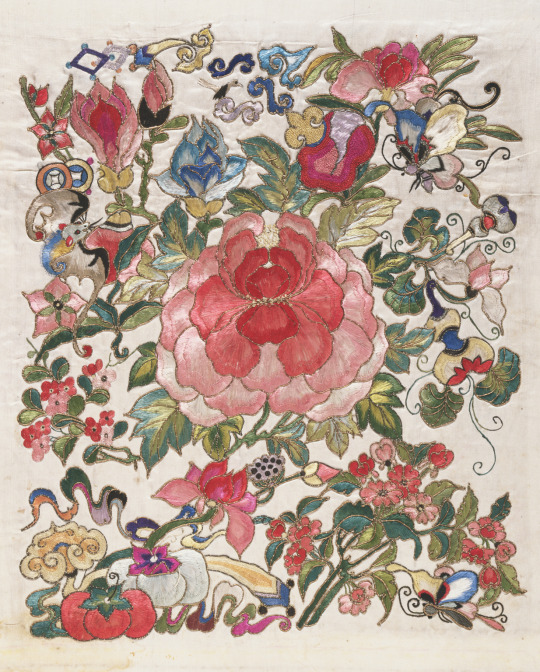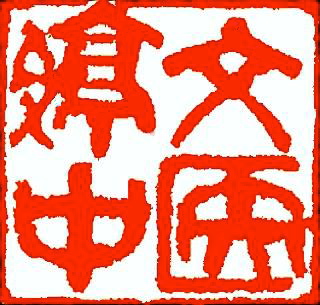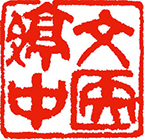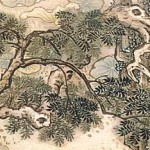Scientific discoveries and inventions should eventually benefit all mankind. However, even in our age, historical conditions may for a long time inhibit or delay the diffusion of even the most mature and incontrovertible findings of an exact science. Chinese medicine or, to use the more precise term, “traditional Chinese medicine”, is perhaps the most outstanding example in point. To understand this paradoxical situation, a few historical facts should be reviewed briefly.
Chinese medicine, as all sciences of nature in China, had been fostered and brought to maturity by what, for want of a better term, we may call Taoist consciousness—implying a vivid yet serene awareness of all cosmic phenomena including the diverse functions of a human personality (we intentionally say ‘personality’ since the Taoists never divorce mental and physical processes). Before this background, Chinese medicine as early as the third century BC, by the diffusion of the Huang Di Nei Jing (the Inner Classic of the Yellow Sovereign) accomplished the transmission from an empirical formative stage to a true healing science, logically stringent in method, highly effective in practice. This healing science, apparently since the beginning of the Christian era until the 11th century AD, was superior in nearly every respect to anything available elsewhere in this world. Unfortunately, this development did not persist.
For during the 11th century, the Confucian administration had definitely taken over the training, examination and to a large extent even the employment of doctors and pharmacists. At the outset, the result of this change appeared to be quite beneficial. Concentration of the most competent physicians and of all the organized training facilities in the provincial centers and at the capital fostered a more intense exchange of ideas as well as wholesome competition among different medical traditions. This in turn led to an extraordinary expansion of medical research and theorizing. The 12th and 13th centuries witnessed a dramatic increase in medical publications. Then, the deleterious influence of Confucian values upon medical thought became evident, an influence that had been latently effective for quite some time. It should here be recorded that the salient trait of Confucian thought through more than two millennia consisted in an unswerving concentration upon the social phenomena, i.e. upon the perception and systematic control of human relations. In comparison to the social issues, in the eyes of the Confucianists, all other problems dwindled to mere trifles, unfit to occupy the minds of any serious scholar. Upon such premises, the integration of medical education and research into the Confucian administrative system gradually yet ineluctably caused humanistic and sociological methods to be applied to the solution of biological and medical problems, a tendency which, in the long run, lead to a perversion of theoretical speculation and to an erosion of clinical and empirical research.
This degenerative process of medical empirical science in China reached rock-bottom during the l9th century. In practice Chinese medicine then consisted only of an odd assortment of proven and fairly crude techniques between which most practitioners could hardly grasp, let alone reconstruct, the guiding ideas. Worse still, the widening gaps in what formerly had been a highly consistent scientific system had been filled with a host of paramedical, i.e. magical or exorcist, procedures. When, at this critical juncture, to top it all, Western medicine appeared upon the scene in the wake of Western civilization and political influence, the total demise of indigenous Chinese medicine seemed to be imminent.
At the turn of the century, what many outside observers believed to be the agony of Chinese medicine was apparently protracted only by the utter destitution of the country and by political chaos. Consequently, it was a matter of general surprise when, after the founding of the People’s Republic since the early fifties, the better part of China’s traditional medical literature was again made available in excellent editions, and when gradually an increasing number of spoken language translations of the medical classics as well as of modern studies and textbooks appeared.
The policy of the new government regarding traditional Chinese medicine culminated in the November 1958 decision of the Central Committee which explicitly stipulated that traditional Chinese medicine should be employed side by side with Western medicine. As a consequence, in the People’s Republic doctors of Western medicine also received what is considered a grounding in Chinese medicine and doctors of Chinese medicine are urged to familiarize themselves with the fundamentals of Western medicine. The implementation of this at first sight most judicious directive led to numerous improvements in health care within China and to some new discoveries such as acupuncture anaesthesia. Yet viewed from a distance of almost two decades since its issuance, there is ample evidence that since the mid-sixties it is jeopardizing and might even destroy the very tradition which it intended to preserve.
The two principal factors bringing about this most regrettable shift are easy to define:
1) In China, already during the years after 1911, and even more so since 1949, constant preference has been given to practice-oriented research, leaving little room for basic investigations into the premises of China’s scientific heritage and none at all for the advanced philological and epistemological research that is indispensable to accomplish the amalgamation of traditional Chinese science with modern Western science.
2) The—at first bonafide, now quite often dogmatic—advocacy of the premise that Chinese medicine at best represents an empirical discipline whereas, by contradistinction, Western medicine constitutes scientific medicine. This latter premise, if left unrefuted, would eventually wreak the extinction of Chinese medicine as a distinctive science.
THE PITFALL OF CONFUSING “SCIENTIFIC METHOD” AND “SCIENTIFIC CRITERIA”
In order to be used today and in the future, traditional Chinese medicine, as any other discipline, must be assessed, evaluated and redefined in accordance with the ‘criteria’ of modern science. But, of course, these criteria must not be confused or identified with the ‘methods’ used in different fields of modern science. Since even scientists sometimes are liable to confuse ‘methods’ and the ‘criteria’ at the basis of these methods, let us simply recall that the essential criteria of exact science in the modern sense (e.g. physics, chemistry or astronomy) are:
1 Positive experience,
2 Univocality of statements,
3 Stringent rational integration (systematization) of empirical data.
It should also be noted that different from these essential criteria are a number of other criteria such as notably the causality nexus, controlled experiment and quantification of data. These constitute accidental criteria whose application is limited to some specific disciplines or fields of research only. The question of paramount interest is to what extent does Chinese medicine comply with the essential criteria of exact science as enumerated.
There is practically no controversy about the fact that Chinese medicine is based upon positive empirical data, upon close and skillful observation of natural and social phenomena. Admission of this is implicit even in the most dilettante accounts of Chinese medicine appearing today in the Far East and in the West, which label Chinese medicine an ‘empirical medicine’. Most students with only moderate familiarity with the original sources of Chinese medical literature agree that these show stringent systematization of collected data. The only issue that baffles modern advocates and critics of Chinese medicine alike is the application of the second essential criterion of science, namely the achievement of univocality of statements. Univocality of statements denotes that in a given context every single statement must only be employed and accepted with one single, precisely defined meaning, to the exclusion of all others, with even slightly similar meanings. (This criterion distinguishes ‘scientific’ from ‘common’ and even from ‘philosophical’ statements which, as a rule, can be understood or interpreted in more than one way.)
Univocality of statements is achieved by, the expression of data with reference to conventional standards. The best-known and today most widely applied conventional standards of Western science are those of the so-called metric system (c.g.s. system) and its technical derivations. These standards are called conventional because their application rests solely upon the tacit or even express agreement of all contributors to a science to formulate all findings with reference to these standards. In other words the standards are not themselves the outcome of any discovery or invention; even less are they the expression of natural law or necessity. Instead they have to comply with the methodological and technical requirements of the science which they serve.
Why this lengthy description? Because in Chinese science the qualitative standards of Yin and Yang and the Five Phases play a role quite parallel to the c.g.s. standards of Western science; because in recent times the failure to correctly assess the role of Yin and Yang and the wuxing has led to endless fruitless debates about the very essence of medical science in China. I doubt, this failure is in turn only the result of a very imperfect perception of the complementary and polar roles of Chinese and Western science.
THE POLARITY OF CHINESE AND WESTERN SCIENCE
After what has just been stated, if we use the term “polarity”, we do not do so because the expression may be en vogue in certain contexts. Rather are we motivated by its strong and basic implications, namely, polar statements are mutually exclusive, at the same time mutually perfectly complementary. Polarizing filters perfectly shut off light of one plane of oscillation, letting pass that of all other planes with different intensities. Any scientific method and its concomitant terminology produces effects similar to that of a polarizing filter: it gives unimpeded passage to cognate data, more or less modifies most other information and hermetically precludes directly polar statements.
It is well to keep in mind these effects when we are faced with the fact that today throughout the world, and including China and Japan, practically everybody making a claim to a scientific opinion on Chinese medicine has, to start with, been thoroughly inculcated with the essentials of Western medicine. This fact by itself, would suffice to explain why modern medical authors either flatly are at a loss to conceive any scientific system different from, yet on a par with, Western medicine, or, if they suspect that there might be more to Chinese medicine than some drug and acupuncture recipes, why they experience extreme difficulties in substantiating such a hypothesis. — Why should this concern us? — Because to the extent that the exact sciences of the West implement their criteria for heuristic methods of unprecedented stringency and effectiveness, there is, in recent times, increasing evidence showing that precisely these criteria and truly scientific methods are really applicable and produce impressive results only within a few clearly defined sections of medical endeavour—leaving others on the level of proto-scientific empiricism.
Every physician has been taught that the specificity of diagnoses and therapy as well as the precision of prognoses is in direct proportion to the rational elaboration, hence to the scientific stringency of any statement. Consequently, in his daily practice, he is constantly reminded of the steep gradient existing in Western medicine between very precise and very vague statements. But he will lack the leisure as well as the intellectual tools to explain this gradient. This leads us to the question of the limitations of the specific method of Western medicine: causal analysis.
CAUSAL ANALYSIS AND ITS LIMITATIONS
Everybody is aware that not each and every object or effect may be completely perceived from a single vantage point or out of one single perspective. And surely this truth applies not only to particular professions such as astronomers, who are obliged to erect their observatories in the Northern and Southern hemisphere as well as in favorable climates – but to absolutely every scientific discipline.
It also applies to heuristic methods and to epistemological modes. Thus in order to perceive and control matter, substratum causal analysis is required. Causal analysis implies that all relations of an observed effect to other simultaneous effects are consciously severed or suppressed and the relation to its cause is explicitly established. Causes axiomatically precede their effects in time, hence, by definition, lie in the past. Past effects constitute materialized effects, hence matter.
Inversely, causal analysis confines positive perception and control to concrete, material, somatic objects. Not even the most judiciously chosen real vantage point will let our eye sight (or the perception of instruments invented to boost their power) take in all the things that may be seen; similarly, no single mode of cognizance—which also implies a finite cognizable horizon—will enable us to perfectly perceive all cognizable effects. The limiting factor of the significance (and applicability of causal analysis is what) from the vantage point of human perception is the decrease of the homogeneity of substrata (matter). This homogeneity of substrata appears to be the greatest in elementary particles whence we observe a steady decrease as we proceed from these in the direction of atoms, molecules, cells, tissues of primitive and higher organisms, animals, human beings, social, political, cultural communities, planetary and galactic systems……
The information that any textbook gives, for example, on the oxygen atom is not merely the result of the observation of one single and particular oxygen atom; rather is it based upon the observation of a statistical number of such atoms. This procedure will yield statements of a probability almost equal to 1 because of the high homogeneity of the atoms. In other words, as a consequence of the fact that the oxygen atoms involved show practically no significant individual differences. Similar consequences apply to other phenomena, with the evident restriction that a decrease in homogeneity (increasingly significant individual differences) will reduce the stringency, the probability, hence the positive quality of statements based upon causal analysis.
Due to the continuous decrease of the homogeneity of substrata (material objects), the limit of significance of statements based upon causal analysis is evidently situated in the center of the scale occupied by biological phenomena where human medicine exercises its functions. In other words, in the vicinity of this borderline, causal statements approach and finally attain the average probability of all aleatory procedures. Or, put still differently, the greater the differentiation and complication of biological organisms (decrease in homogeneity), the less probability attaches to inferences drawn from the observation of one single individual as regards the reactions of all others. Less stringency also attaches to statistical data obtained from the observation of large number of similar individuals if used to prognosticate in detail individual and specific changes. In brief, the stringency and significance of statements based upon causal analysis show a clear decline in the field of human physiology; and they fade away into utter indetermination when psychological or social phenomena are involved.
INDUCTIVE SYNTHESIS AND ITS LIMITATIONS
The fact just described that statements based upon causal analysis will completely lose all stringency and significance is by no means tantamount to a complete blurring of stringent rational statements bearing on the phenomena concerned; after all, causal analysis is not the only mode of cognizance, not the sole perspective permitting the rational expression of positive statements on reality. In order to perceive and control functions, movement, dynamic or psychic phenomena, inductive synthesis is required. Inductive synthesis implies that agents actually inducing effects in each other are consciously maintained or assembled. Induction implies the simultaneous presence of agent and effect (and perception). Present effects constitute dynamic effects functions, movement.
Inversely put, inductive synthesis confines positive perception and control to dynamic, functional effects or phenomena. Needless to insist, just as causal analysis, inductive synthesis has its natural and axiomatic limitations. The significance of statements based upon inductive synthesis out of the human cognitive perspective appears to be limited by the stability of functions, in other words, by the relative duration within which a given function is maintained in the same quality or direction. This stability of function appears as being great in galaxies and shows a continuous decline in planetary systems, cultural, political, social communities, human individuals, higher and lower animals… In other words, the stability of function varies in inverse proportion to the homogeneity of corresponding substrata.
[Our use of the terms inductive, induction, inductivity derives from and extends the meaning these terms have in Electrodynamics.] In practice, this theorem establishes the complementary validity, significance and applicability of causal analysis and inductive synthesis: to the extent that the positive quality of statements based upon causal analysis decreases, that of statements based upon in inductive synthesis increases—and vice versa. At this juncture we should have little difficulty in realizing that the thematic over lapping of the positive results of causal analytic science and inductive and synthetic science may occur only in a small central area, that, consequently, aside from this, both will furnish equally positive and significant data on utterly different aspects of reality.
THE MESSAGE OF CHINESE MEDICINE OBSCURED BY THE FASHIONABLE USE OF WESTERN TERMINOLOGY
Resuming the preceding comparisons we should bear in mind:
la. the adequate perception of movement is dependent upon its duration;
lb. the adequate perception of matter is dependent upon its homogeneity.
2a. Similar movements (functions) show qualitative differences;
2b. similar material bodies show quantitative differences.
3a. The choice either of a causal and analytic or of an inductive and synthetic approach is neither an indifferent nor a personal and arbitrary one; instead it will determine which part of reality will be defined positively;
3b. similarly — conventional standards being intellectual tools for achieving univocality of statements — the choice of either quantitative conventional standards (the metric system) or qualitative conventional standards ( Yin, Yang and the wuxing, the five Evolutive phases) is determined solely by the aspect of reality that is to be dealt with.
4a. The refusal to use these tools will thwart any attempt at achieving any degree of scientific stringency.
4b. The use of the inappropriate tools (e.g. of quantitative standards applied to the functional statements of Chinese medicine, or qualitative standards used on the material data of Western science) will obliterate or destroy existing scientific data.
What applies in a strict and narrow way to the conventional standards applies in a wider sense to scientific terminology in general. It is a well-known fact that the massive influx and acceptance of Western science and technology into China and Japan since the 19th century in these countries gradually lead to contempt for, if not outright ostracism of, all traditional learning, including medicine. And, to be sure, this disdain was only to a small extent justified by the real shortcomings of indigenous science; it was (and in fact still is) preponderantly motivated by the trauma and inferiority complexes in the wake of the political and cultural collapse following Western expansion into East Asia.
In Japan the government flatly ruled that Western medicine constitutes the only scientifically acceptable and proven kind of medicine and is consequently prerequisite to the training and to the licensing of every physician. In China, the struggle between both systems is still on. The sympathies of the Chinese medical establishment are clearly going to Western medicine with its cosmopolitan and modern flavor. In this situation the practitioners and advocates of traditional medicine fell to what they thought was the best expediency for convincing everybody of the value of the traditional craft: they tried to explain it in terms of Western medicine. From what precedes it should be clear that those well-intentioned native defenders of their medical heritage are in reality jettisoning and destroying what they set out to preserve. As a highly instructive example let us consider the case of anatomy versus Zangxiang, orbisiconography.
ANATOMY VERSUS ORBISICONOGRAPHY
Anatomy is rightly considered one of the mainstays of modern medical science. Any graduated MD today treating a patient in any corner of this world will have a neat array of anatomical knowledge operative at the back of his mind. So what should there be wrong with the statement that anatomy is prerequisite to curing sick people’? Chinese doctors, so we are told, at times have been very successful in curing disease; And their recent accomplishments in the People’s Republic of China certainly offer ample evidence of the effectiveness of their techniques. So why not grant that they must have at least some basic notions about anatomy? This is precisely what we find rehashed today in all the popular and not so popular accounts of the theories of Chinese medicine not only in the West but also in modern China. A simple experience should put us on guard. Any Chinese doctor who, speaking English, may blithely perorate on ‘Chinese Anatomy ‘(with an apologetic shrug sometimes: ‘It: is very primitive’), will unfailingly avoid the equivalent of the Western term (Jie pou xue, Anatomy; literally “The Study of Dissection”) as soon as he talks in Chinese on Chinese medicine. Why? Because his language has a different term for what he and his Western colleagues, out of habit or convenience, have persistently called “Chinese anatomy.”
This term is Zangxiang, and its English normative equivalent is ‘orbisiconography’. It is under this term — Zangxiang — that the body of knowledge in question is dealt with in all except the most recent Chinese textbooks of Chinese medicine. Consulting the usual dictionaries for the usual meanings of the terms Zang and xiang will advance us but slightly. Xiang is given as ‘picture’, ‘image’, ‘outward appearance’. Hence, since we deal with a descriptive discipline, the notion ‘imagery’ and, from the Greek eikon equal to ‘picture’, iconography may appear justified. The term Zang, however, is only given as ‘intestine’, an equivalent perfectly acceptable if it occurs in the speech of a butcher or an ancient Chinese executioner. It makes next to no sense in the texts of traditional Chinese medicine. With the sole exception of the Nan-jing, a slim book, probably compiled during the second or third century AD, positively no influential medical treatise produced during the more than two millennia of the indigenous Chinese tradition gives anything that could be generously admitted as ‘anatomical data’ beyond the statement that certain Zang are situated above, others below the diaphragm.
But what then do the compendious chapters on the Zang, found in almost every treatise, contain? They are filled with wild speculation and insipid theories, we are told by the self-appointed ‘experts’. These ‘experts’ point to the pictures with which some of the Chinese authors had rashly chosen to illustrate their Zangxiang theories.
These pictures are revealing indeed. To bring them in to full relief, let us recall that, in the course of history, Chinese butchers have slaughtered millions of pigs and Chinese executioners have slashed open or cut to pieces tens of thousands of criminals. How then did the Chinese medicos envisage and depict the Zang? A Zang called ‘heart’ connected through the ‘lung pipe’ (trachea) with a Zang called lungs’; the same Zang connected by three (or four) separate ducts with other Zang called respectively ‘liver’, ‘spleen’, ‘kidneys’ and again ‘lungs’; a Zang called ‘urinary bladder’ connecting by its upper orifice to a Zang called ‘large intestine’, etc.
May we conclude that Chinese doctors did only take a most perfunctory look at the intestines when they had a chance to inspect them? — It is probably more correct to state that they did not look at them at all! This persistent refusal of Chinese doctors to perceive the macroscopic configurations of the vitals before their eyes will amaze us only if we very much underrate the decisive influence of the perceptive modes (i.e. inductive versus causal) which produces a complete polarization of reality already on the level of empirical description.
To make the picture complete, Western doctors to this day manage to ignore almost completely a host of quite significant functional changes that they might clearly discern without the aid of an instrument every hour of the day, upon their own and their patients’ organisms. It is these functions and their changes which form the meat and marrow of Chinese medicine. It is the description of these functions which constitutes the fundamental data coming under the heading of Zang-xiang, orbisiconography.
If we examine the information laid down in the chapters on orbisiconography, we rapidly become aware that nearly all the statements made bear on the imbricated and interdependent vital functions, on cyclical functional patterns, in other words on ‘orbs of functions’. The felicity of this choice of an equivalent is confirmed in whichever direction we may decide to advance into the complexities of Chinese medical theory.
Take for instance the problem of the sensible interpretation of the orbisiconographic illustrations already alluded to. If Zang is understood as an orb of functions then the pictures of orbis-iconography can only represent graphic models similar to those used, for example, in nuclear physics. No physicist, building a model of some specific atom, will believe that he is simply enlarging a photographic picture of such a structure; and if he represents the electron by smooth metal balls, and their tracks by metal rings and the nucleus by a raspberry, he will never pretend that, on a much smaller scale, the real electrons are smooth balls running on metal rails, and the nucleus looks like a raspberry. If his model of the atom incorporates elements more or less resembling known objects, this is merely because he intends to appeal to the imagination and to help the memory of those whom he wants to instruct. Similarly, the medical authors who formerly illustrated the orbisiconographic treatises did not (and never pretended they meant to) depict what they had observed in an anatomical theatre. Their unique aim was to facilitate the mnemonic assimilation by their reading audience of systematized results of positive observations.
This point leads us directly to another point that must be made with regard to the normative translation of Zang by orb(i)s: Having constantly stressed the fundamental difference of outlook at the base of Chinese and Western sciences, we should have no difficulty comprehending that, not in spite of, but precisely because of, the high degree of empirical sophistication and logic consistency achieved in each system, their respective statements can never be completely congruent.
A Chinese “Zang-manifestation” (orbisiconogram) is the logical integration of the positive observations on a coherent chain of manifest functional changes of the human being (we do not say ‘body’ since, let us repeat, the Chinese did not divorce physis and psyche). And, in spite of the name it may bear (e.g.-cardial orb) ‘heart’ or ‘spleen (orb)’..etc., it is only faintly associated with the somatic organs so designated. No traditional Chinese doctor will pay greater attention to pulses when dealing with disorders of the cardial orb than in dealing with those of the ‘spleen’.
By contradistinction, the functions Western physicians attribute to the elaborately described organs are accessory to the anatomical definitions of these organs. The Western medical scientist feels awkward if he has no organ to account for a given vital function; the Chinese medical scientist would have been worried if he failed to tie in properly a newly observed function with a stock of functional observations accumulated by his predecessors. The latter is, it may be recalled, the attitude of the astronomer from antiquity to this day.
CONCLUSIONS
There is a worldwide consensus within the medical profession that, in spite of the significant advances of medicine during the past 100 years, for a large proportion of ordinary health disorders still no safe and certain treatments exist. Hence the continued search for new treatments and remedies, hence the interest in medical traditions beyond the methodological limits of Western medicine.
Traditional Chinese medicine constitutes by far the most comprehensive, coherent and effective body of medical science beyond these limits. Yet to this date, and despite the most intense efforts in China as well as in the West, only a small fraction of its therapeutic potential has really been tapped. Worse still, by the very efforts made to exploit Chinese medicine, its scientific core and essence is in danger of obliteration. This danger as well as the meager results of pertinent research — as our considerations were intended to demonstrate — are quite patently the consequence of a confusion between scientific criteria and scientific methods.
Thus instead of applying to Chinese medicine the universal criteria of exact science, the absurd and of necessity, abortive attempt is constantly repeated to reassess it by means of methods evolved by and only applicable to Western medical science. This attempt is tantamount to observing the stars during the day or watching clouds during a moonless night: no amount of persistence will then produce the information which could otherwise be obtained quite easily.
Consequently respecting and applying the methods of Chinese medicine in order to verify and apply the mature and rational data of this very medicine is not a matter of historical style but an ineluctable necessity of elementary logic. The sooner this is realized, the sooner hitherto seemingly insuperable obstacles may be overcome.
Dr. Manfred Porkert is professor at the Institut für Ostasienkunde der Universität München, West Germany.
